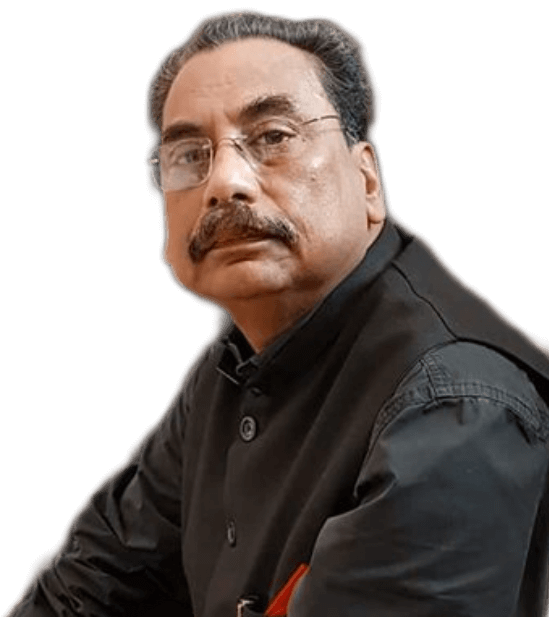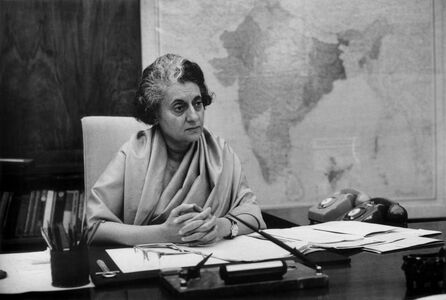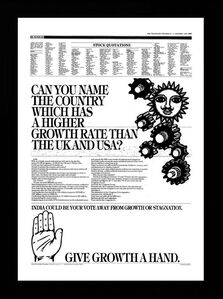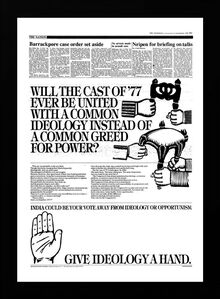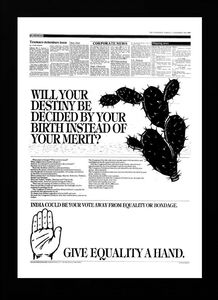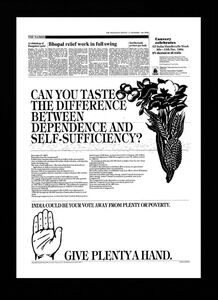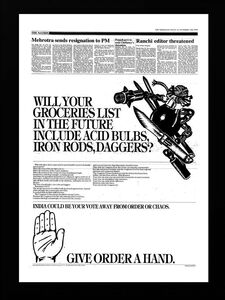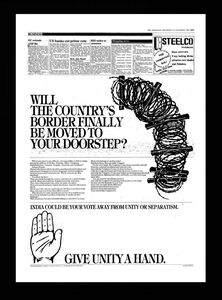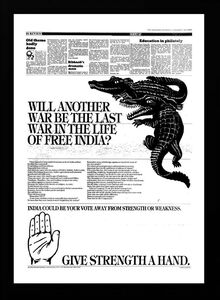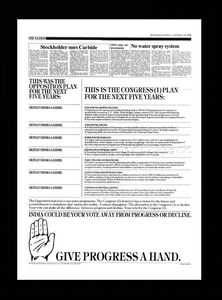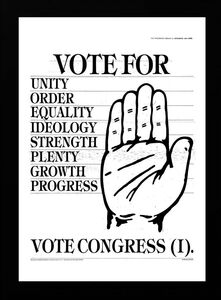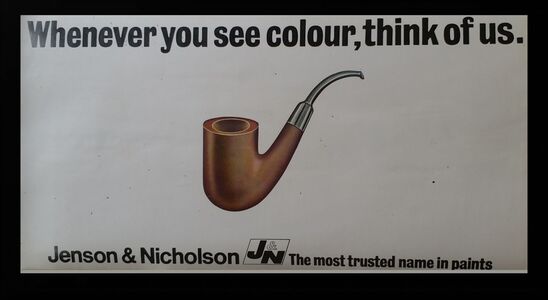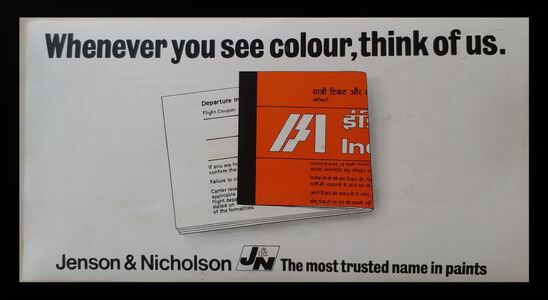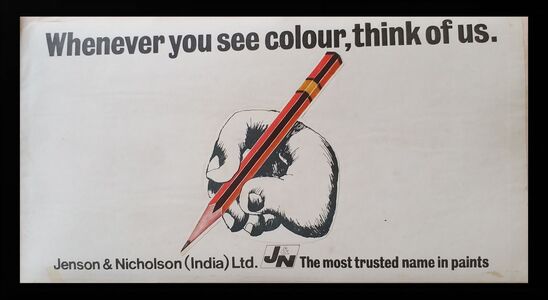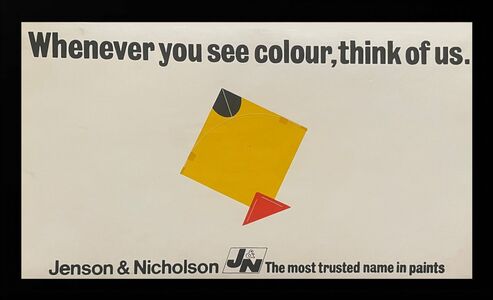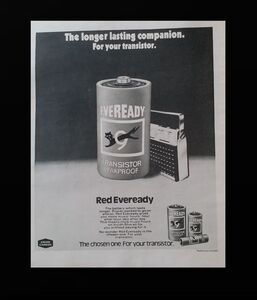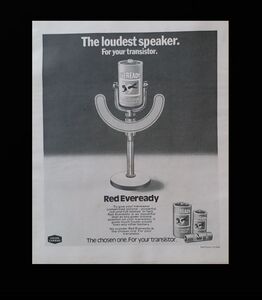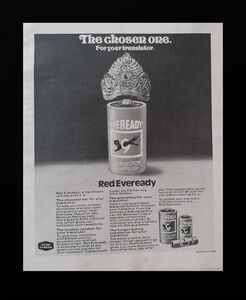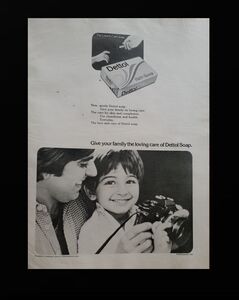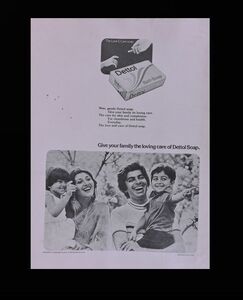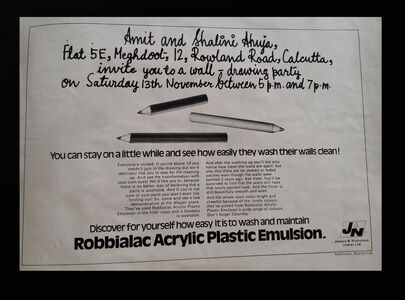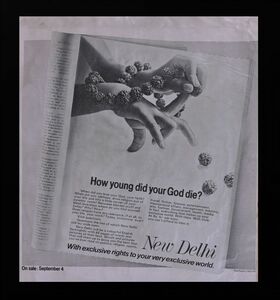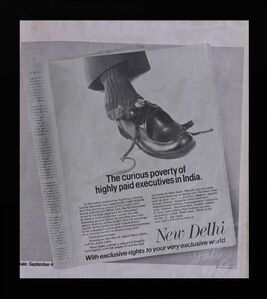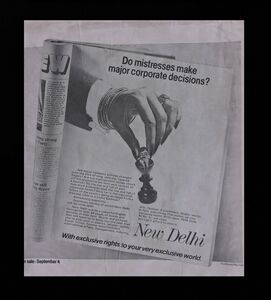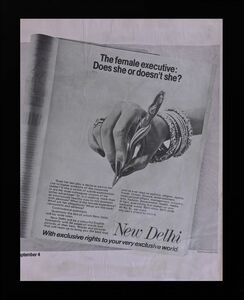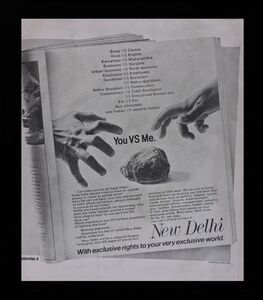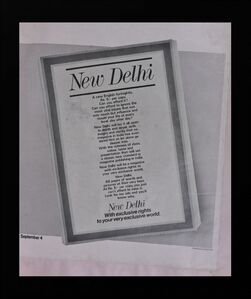On 1st. of January 1978 I joined Rediffusion Advertising. Not the Rediffusion you see now, famous with the baggage from the dot.com days. Rediffusion: striving- lean, thin and hungry. Modelled much in the line of the then famous advertising agency Doyle Dane Bernbach. Rediffusion was started and run by B School graduates from IIM. Arun Nanda at the helm as Chairman and Ajit Balakrishna and Subhash Chakraborty, both Marxists, one from Kerala and the other from Bengal ruling the roost. Ajit was in charge of finance and Subhash in charge of Media and also the Branch Director of Calcutta Office.
I joined in Media, to be trained by none other than Subhas, on a number of reputed clients reading like a who‘s who in industry. Union Carbide, Indian Tube, MRF, Ananda Bazar and not to forget the most important Jenson & Nicholson and Reckitt & Colman. I was a sort of a back room boy working endlessly on Media Strategy and Plans which best suited the client. Like most media person, the opportunity to meet the client was rare and maybe once a year in the annual presentation. Within this, I did have the opportunity to meet the client through a harmless piece of paper, a statutory agreement drawn up between the President of India and the Client. This was the agreement for release in All India Radio and Doordarshan. And it was to be signed religiously with the Head, which meant meeting the Aruns. Arun Nehru at Jenson & Nicholson and Arun Singh at Reckitts. I came close to them as I waited many an afternoon to catch the all-important bosses.
It was the Aruns who were responsible to get Rediffusion introduced to the Indian National Congress. Or to be precise to get the other Arun, Arun Nanda to meet Indira Gandhi. As you would recall, Indira Gandhi served as the third Prime Minister of India for three consecutive terms from 1966 to 77 and a fourth term from 1980 to 84. In between she was out of power and our story unfolds during this period. In 1979 both the Aruns, were dragged into politics. The two Aruns: Singh and Nehru. They were as different as chalk from cheese. Both had entered politics laterally, both had been box-wallahs, both had been brought in to assist the Gandhi family. But there the similarities ended. Arun Nehru had been Sanjay Gandhi's choice, and one can see why. Arun Nehru was brash and loud-mouthed and he knew how to throw his weight around, both literally and metaphorically. He was introduced in the kitchen cabinet and inducted into politics soon after the 1980 election that had brought Indira Gandhi and Sanjay back to power.
Mrs Gandhi had fought from two constituencies, Medak in Andhra and Rae Bareli in UP. She had won both and decided to retain her Medak seat. They were looking around for a trusted man for Rae Bareli, which they considered a family pocket borough. The story is told of how Sanjay Gandhi was at the breakfast table one morning when the safari-suited cousin Arun Nehru shuffled into the room, and the idea stuck Sanjay like a lightning: Why not him? Sanjay is said to have asked, and so entered the future 'Big Boss' of the Rajiv days. Nehru never quite fitted with the Rajiv set, but he was planted there by Indira Gandhi more to 'protect and guard' her soft and reluctant heir. Arun Singh, on the other hand, was entirely Rajiv Gandhi's choice. 'We were the Beatles Generation,' Rajiv had once said of his own group of friends. It was Arun Singh who had given this label to the bunch -- a happy and boisterous lot who loved their cars, their music, their women, and who loved the merry swing of their lives, dreamy, a little careless and a little innocent about the hard stuff of life. They seemed to make up a new Camelot, as it were, bleary with vision of hope and glory. It was not politics or power that brought Amitabh Bachchan or Mani Shankar Aiyar or Arun Singh to the national centre stage, but Rajiv Gandhi. The two Aruns were often bracketed as being the two who were closest to Rajiv Gandhi, but Arun Nehru never belonged to the Rajiv group as Arun Singh did. Born in the princely family of Kapurthala, Arun Singh had been at Doon School and later in Cambridge with Rajiv Gandhi. After doing his MA in 1971, Arun Singh had joined Metal Box and later Reckitt and Coleman. Arun and Rajiv were great friends and so were their wives, Nina and Sonia. When Rajiv moved from 5 to 7 Race Course Road as Prime Minister, he made the Singhs live in the adjoining bungalow, with just a wicket gate separating them.
The Aruns coming from corporate background wanted to ‘corporatize’ the party and one of the thing that they recommended was a campaign for the coming 1980 Indian General Election to be held between January 3 and 6. They had an extensive meeting with Arun Nanda whom they briefed from where the campaign started rolling. Arun took charge of the creative, Ajit the finance and Subhash the media. It is here that I come in and we got to work extensively on an All India Plan and I was happy that both the Aruns had highly recommended that I get involved. I was pleased as punch. Massive, to say the least of the exercise. I spend 20 days at a stretch in office sometimes going over to Subhash’s home for guidelines. The first architecture of the plan took more than 45 days. The plan involved practically all media across Indian Subcontinent, without a single discussion with any outsider as this was top secret. It is during this period that I had my real learning on the Indian Media, as I flew in and flew out of many a remote place to gather informations, many of them an eye opener to say the least. Facts such as; the Thia community of Kerala primarily read Kerala Kaumudi or for that matter the Chinese in Calcutta chose not to vote. So do you take their limited Chinese newspapers for a campaign to build their opinion or just look over their shoulders? There were more revealing facets. All not to be shared. At the end of it, with the main strategy and the creative it came to nearly a two and a half hour presentation with half an hour for discussion, a pretty long narrative for the Leader of the Opposition. We had no clue how we are to convince Indira Gandhi to sit for the presentation. It fell on Arun Nehru to request Sanjay Gandhi to make her mother agree. Mrs Gandhi agreed more to please her son than being convinced of the need of an Advertising Campaign.
The date was set and the presentation was to be held at her office, in her residence at 1 Safdarjung Road. In the meantime, Sanjay Gandhi died on 23rd. of June 1980 and she went in mourning. The presentation was held in September 1980. Subhash and myself flew to Delhi with tons of back up material and parked ourselves in the hotel. The day came and we went to meet first Arun Nanda and Ajit Balakrishna and then joined by Arun Singh and Arun Nehru. We landed at her residence and I started fixing up the presentation screen and the projector. Those were the days of Kodak Carousel. When all was set Subhash gently came over and asked me to take a break. That is go over and relax in the hotel. The heaven fell from the sky. I was aghast. With so much of working and those were not computer days, am I being politely asked to leave? I got into a nasty discussion and just as I was being ordered to leave, Indira Gandhi entered and sensing something inquired. To which I was going to raise my voice of protest, smouldered by the Big Brothers much to my satisfaction, as I was offered a chair a little at a distance, away from the main team, to sit and watch the presentation. The presentation lasted nearly 2 hours 45 minutes. There was complete silence. I will not use the cliché ‘pin drop silence’ as a pin does not make a sound when it falls. There was no break either for coffee or tea or you know what. No questions. Only the rattle of a monologue in a drama. Indira Gandhi sat fixed, looking straight but eschewing every word. No movement. Not even a small rustle of her sari. My position was unique. Just like an umpire. No comments or observation. I was not tense as I was not scheduled to make any presentation and watched the proceeding with rapt attention. At the end of it all Indira Gandhi wanted the lights on. Then to the team she asked one single question: “Gentlemen ... after doing all that you show and want to be executed .... How much of my electorate do I reach?” There was dead silence. A team of top level corporate. All from IIM. A single pointed question. Then there was a flurry Arun referred to Subhas and Subhash after some deliberation asked me to check the papers. I pretended to check then to I got up and directly answered her to save the team from embarrassment. I replied that we have the calculated the reach which is based on the National Readership Survey, but to be honest, we have not worked with the electoral figures. Indira. Gandhi then directing her question to Subhash: I think you are from West Bengal... I am trying to find out that after executing your plan, do I need to reach out to my electorate in Baharampore in Murshidabad and to what extent?” She knew there was no answer. She got up with a flourish which she herself had invented and patented for herself and left the room. That was the end of the great presentation.
I was told to pack up and keep things together which I did promptly. After having sat through this long I took a break. I was never a fan of Mrs. Gandhi. Just the opposite. What with her declaring a state of emergency, effectively bestowing on her the power to rule by decree, suspending elections and civil liberties. It is one of the most controversial times in the history of independent India. I remembered that in1977, after extending the state of emergency twice, Indira Gandhi called elections, to give the electorate a chance to vindicate her rule. Gandhi may have grossly misjudged her popularity by reading what, I presume, the heavily censored press wrote about her. In any case, she was opposed by the Janata Party. Janata, led by her long-time rival, Desai and with Jai Prakash Narayan as its spiritual guide came to power. With the current turn of events, bowling out some of the best batsman of advertising was a feat. With this, I was in awe. As I was returning I found her sitting at her desk in her office with the door open doing some work. I knocked and entered and presented her my visiting card and asked for hers. You see, when you are young, you have great strength in such things. You are not afraid of anybody. Nor afraid of your job. If you ask me now I don’t think I can repeat performance. She smiled, for the first time and said she does not have a card. Then surprisingly she asked me to sit and called her aid. I could not understand. Then she queried about my job. She complimented me and said that I had done a great work. Her aid came and handed over a box which she presented to me saying that this is in lieu of the visiting card, a left over from her last days in office as the Prime Minister in the last term. It was a silver frame with the Government Emblem on top containing a smiling black & white autographed photograph of herself. I took permission to leave, to join my team as they sat sipping cups of Darjeeling tea served in Silver trays. They were amused on seeing the gift and wanted to know what transpired. Almost thinking could get the campaign through.
Indira Gandhi came back to power in 1980. I wrote her a congratulatory letter to which she replied. Till her assassination in 1984 we went on with our correspondences and I received a card at the end of each year wishing me he best of the season. Rajiv Gandhi was sworn in as Prime Minister after her assassination on 31st of October 1984. I was then with the Anandabazar Group. Prior to the general election of 1984 held from 24th to 28th December, the campaign presented by Rediffusion was approved by Rajiv Gandhi and released with the change in creative but minor change in Media Plan. Most of you might remember the campaign as, ‘Terror at your doorstep’ followed by 'My heart bleeds for India'. The Indian National Congress came back to power and Rajiv Gandhi became the Prime Minister. Many believe that the campaign played a great role in this. I chose to be different. I strongly believe that the assassination of Indira Gandhi paved the way for the unification of Congress and their return at the hustling. I still have the photograph of Indira Gandhi and her Seasons Greeting cards in the mantle of my living room.
Rediffusion Campaigns.
Jenson & Nicholson: Corporate Campaign. 1978.
The Corporate Campaign was unique and one of a type. To project image of JN as the 'best' pain manufacturer: making the best paints. To attain this the agency recommended a Hoarding (Outdoor/ Billboard) Campaign. To take selective hoardings all over town in strategic position. A corporate campaign in Hoardings was unheard of. Moreover there will be no visuals of paint cans, brushes etc. so identified with paint. But only ‘Colour’ association. The hoardings will have different visuals of common everyday objects like smoking pipe, lipstick and associate it with colour. The Line was: Whenever you see colour, think of us. Jenson & Nicholson, the most trusted name in paints. The visuals will be changed every week. To accommodate the tight budget and wasteful expenditure, the hoardings were not repainted every week but the board interchanged from one place to another. For example if there was a board with Lipstick at the site at New Market and an Air Ticket near Airport after a week these two would be interchanged. In this manner you saved cost and also gave the appearance of a huge amount of visuals appearing keeping the target audience guessing. The campaign became the talk of town and the consumer started to recommend the visuals. The campaign was a huge success and ran for over 10 years establishing J&N as a premium paint company.
Union Carbide India Ltd. Red Eveready. 1978.
The battery Market is divided into two Categories. Bare Bottom (BB) False Bottom (FB). Bare Bottom does not have the leak-proof seal and is much cheaper than the False Bottom. Red Eveready is BB and a very popular brand. But it had taken a set back with other new entrants. The task was to establish it back as the ‘King”. The campaign focused on its many aspects: Durability (Longer Lasting), Powerful (Loudest Speaker), thereby the Chosen One for your transistor; The King. In all the advertisements it emphasised on the match, good listening of Vividh Bharati which was the chosen band for transistor listeners. It emphasised on Leak Proof, Guarantee and coming from Union Carbide. The campaign worked, not only getting back its market share but increasing its share. Latter it established as the ‘Red’ leading to the slogan: ‘Give Me Red’. It also paved the way for the company to foray into the launch of a wide range of products.
Reckitt & Coleman: Dettol Soap. 1979.
The toilet soap market is large. The market can be divided into Popular and Premium. The Premium soap market is predominantly urban. The major brands: Pears, Lux Supreme, Liril, Cinthol, Margo and Mysore Sandal have all entrenched themselves firmly in clearly defined position based claims in benefit areas like freshness, complexion and skin care. RCI felt that there was scope for a new entry in the premium segment, the characteristics of which were in concordance with the company’s mode of operations. The produce developed was akin to the Dettol Medicated Soap marketed in the UK, Middle East and others. However, it was decided to forgo the 'medicated’ route in India due to infrequent usage of medicated soap, perceived as special purpose soap. Moreover the Dettol image connotation is with clinical, antiseptic nature and ‘harshness’ generally perceived to go with Dettol brand. It was decided to launch it as a unique gentle soap’ for the family caring for your skin and complexion. A bath with Dettol Soap keeps your skin clear and healthy. After a test market in Maharashtra from April to August 1979 the product was launched nationally in September 1979 to meet with success.
Jenson & Nicholson: Robiallac. Plastic Emulsion Paint. 1979.
Plastic Emulsion paint (PEP) is the most expensive variety of paints, and are image leaders for all major paint Companies. PEP is used on interior walls. Nearly 80% is used by households, balance by institutions. Robbialac is one of the first PEP introduced in India. However in the 60's and early-70, J&N. was overtaken by other paint companies like Asian Paints, Goodlass Nerolac, Garware, Shalimar, and British Paints. The distance between Robbialac and other brands (except the brand leader) was not high in image terms. Since PEP are image leaders for paint cos and act as 'flag-slips' for these companies, all leading brands are quite heavily advertised and promoted. There are four decisions a consumer makes: type of paint, brand of paint, colour of shades, painter. The agency undertook a research and found a latent factor which determined consumer decision. Washability. Is the painted wall washable? The agency thought of an innovative idea to woe the consumers. Invited them with their children to come over to a home and see their children draw on the wall with colours and then stay behind to see the wall cleaned.
Ananda Bazar Patrika Group. New Delhi. 1980.
The group wanted to launch a premium English Fortnightly. It was named New Delhi. A Fortnightly magazine featuring journalism, commentary, criticism, essays, fiction, satire, cartoons, and poetry. It will carry reviews and events listings focusing on the cultural life. It will carry commentaries on popular culture and culture, its attention to modern fiction by the inclusion of short stories and literary reviews. It will do rigorous fact checking and copy editing to depict its journalism on politics and social issues, and its pen and pencil sketches sprinkled throughout each issue. The target audience would be on the top rung with a wide audience outside New Delhi. It will have well known artists for its illustrated and often topical covers. The Campaign was high-pitches and created a sensation in terms of its bold headline and visualization of topics to be covered. Headlines such as: How young did your God die? The magazine was a hit in the stand.
